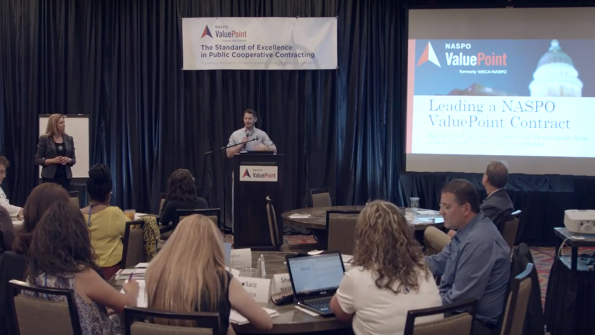Helping sourcing teams plan backwards and think ahead
One of the secrets to the success of one of the nation’s largest cooperative purchasing organizations is its process improvement team. Led by state procurement professionals, the team supports the states’ contract leads who manage the national cooperative’s sourcing teams. These sourcing groups, who have no supervision for the most part, include four to seven-members from across the nation. To top it off, much of their work is conducted through conference calls. The process improvement team develops tools to support the sourcing teams and help demystify the cooperative buying process. They train contract leads on leading contracts.
Over time, the process improvement team developed a process guide and model RFP terms and conditions. Contract leads follow their own state laws and practices, but the models serve as a resource to capture widely accepted best practices. Sourcing teams are encouraged to use the model approaches.
Over the previous year, contract leads had shown an interest in training on project management. At the annual training for contract leads, a Project Management Professional (certified by the Project Management Institute) provided four hours of training. Those familiar with the Project Management Body of Knowledge recognized its concepts throughout the presentation: stakeholder analysis, project charters, project management plans, communications plans, risk management plans, schedules, project closure, etc.
Post-training satisfaction surveys revealed that the attendees liked the training, but some leads still wanted to know what was most relevant. In a roundtable discussion on the last day, in the area of schedules in particular, some leads thought that a sample schedule tool would be useful.
While sophisticated charters may not be needed for most solicitations, there are significant differences between cooperative procurements of this magnitude. The process team developed a charter for chief procurement officers (CPOs) to state the goals of the cooperative and highlight considerations unique to the coop’s procurements, among them: select experienced leads who can manage a schedule and lead a virtual team, support the lead and sourcing team; and develop a schedule suitable for managing the project and communicating with stakeholders. The charter is written for CPOs.
Pam Johnson, a procurement analyst for the state of Oregon, advises procurement professionals to “plan backwards.” Working backwards from the objective, setting and managing a schedule are core skills of project managers: they and their team identify the dependencies between activities, assemble the schedule and assign responsibilities for tasks. The process improvement team developed an Excel model timeline that incorporates a checklist of key milestones, representative durations, and schedule considerations. The timeline also includes a sheet for recording team responsibilities for tasks.
The team also realized that the “think ahead” phase during project execution had to include relevant communication of progress. All managers in the process need to know key milestones. While a formal communication plan may not be necessary for all procurements, the team developed a simple, one-page update template for communicating the 30-day “look ahead” schedule and significant issues being worked.
In the end, this team demonstrated one of the disciplines of all effective teams: use just enough structure to help the team organize thinking
and action.
Richard Pennington, J.D., LL.M., CPPO is general counsel to NASPO ValuePoint. He is the author of Seeing Excellence: Learning from Great Procurement Teams (www.seeingexcellence.com).




















